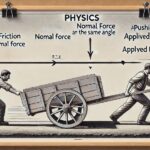Welcome to Physics Heaven, where we explore the intricate concepts of theoretical physics. One of the most profound topics in modern theoretical physics is the quantum-mechanical approach to completely integrable field theory models. This topic bridges the gap between quantum mechanics, field theory, and mathematical physics, providing powerful methods to analyze solvable models in quantum field theory.
Completely integrable field theory models are fascinating due to their exact solvability, allowing physicists to derive precise solutions for complex physical systems. The quantum-mechanical approach to completely integrable field theory models enhances our understanding of these models by employing algebraic and analytical methods rooted in quantum mechanics.
Understanding Completely Integrable Field Theory Models
Completely integrable field theory models are distinguished by the presence of an infinite number of conserved quantities. These models possess exact solutions and exhibit remarkable mathematical structures, making them a cornerstone of both classical and quantum physics.
In classical mechanics, an integrable system allows for solutions through action-angle variables, leading to completely predictable dynamics. In quantum mechanics, these models maintain solvability through methods such as the Bethe ansatz, inverse scattering transform, and algebraic approaches based on quantum groups and symmetries. The quantum-mechanical approach to completely integrable field theory models provides deeper insights into the behavior of quantum particles and fields.
Mathematical Foundations of the Quantum-Mechanical Approach to Completely Integrable Field Theory Models
The quantum-mechanical approach to completely integrable field theory models relies on advanced mathematical structures such as:
- Bethe Ansatz: A method used to determine exact eigenstates and energy spectra in quantum systems.
- Quantum Inverse Scattering Method: A powerful approach utilizing Lax pairs and R-matrices to solve integrable models.
- Yang-Baxter Equation: A fundamental equation governing the factorization of scattering matrices, crucial for quantum integrability.
- Algebraic Structures: Quantum groups and affine Lie algebras play a crucial role in defining symmetries of integrable models.
These mathematical tools enable physicists to construct and analyze quantum integrable models, leading to exact results in field theory.
Key Examples of Quantum-Mechanical Approach to Completely Integrable Field Theory Models
Several well-known models demonstrate the power of the quantum-mechanical approach to completely integrable field theory models. Some of the most important ones include:
- Sine-Gordon Model: A relativistic field theory with solitonic solutions and applications in condensed matter physics and string theory.
- Thirring Model: A model describing interacting fermions in one dimension, exhibiting exact solvability via the Bethe ansatz.
- Korteweg-de Vries (KdV) Equation: A fundamental equation in fluid dynamics and integrable systems, possessing solitonic solutions.
- Nonlinear Schrödinger Equation: A key model in optics and Bose-Einstein condensates, showcasing integrable properties.
Each of these models illustrates how the quantum-mechanical approach to completely integrable field theory models leads to a deeper understanding of physical phenomena.
Applications of Quantum-Mechanical Approach to Completely Integrable Field Theory Models
The implications of the quantum-mechanical approach to completely integrable field theory models extend across various domains of physics, including:
- Condensed Matter Physics: Quantum integrable models help describe low-dimensional systems, such as spin chains and superconductors.
- Quantum Computing: Insights from integrable systems contribute to the development of quantum algorithms and error correction.
- String Theory and Quantum Gravity: Integrable models provide valuable tools for analyzing AdS/CFT correspondence and holography.
- Statistical Mechanics: The study of solvable models aids in understanding phase transitions and critical phenomena.
These diverse applications highlight the fundamental importance of integrable models in modern theoretical physics.
Challenges and Future Directions in Quantum-Mechanical Approach to Completely Integrable Field Theory Models
Despite significant progress, the quantum-mechanical approach to completely integrable field theory models faces ongoing challenges:
- Generalization to Higher Dimensions: Many known integrable models are limited to one or two dimensions, making generalization difficult.
- Non-Equilibrium Dynamics: Understanding quantum integrability in non-equilibrium systems remains an open question.
- Experimental Realization: While theoretical models are well-established, experimental confirmations are still developing.
Future research aims to address these challenges by exploring new mathematical frameworks and experimental techniques, further advancing our knowledge of integrable field theory models.
Conclusion: The Significance of Quantum-Mechanical Approach to Completely Integrable Field Theory Models
At Physics Heaven, we continue to explore the deep connections between mathematics and physics. The quantum-mechanical approach to completely integrable field theory models stands as a pillar of modern theoretical physics, offering exact solutions and profound insights into quantum systems.
Through mathematical elegance and physical relevance, these models pave the way for advancements in fundamental physics, quantum computing, and beyond. As research progresses, we anticipate even more breakthroughs in the study of integrable quantum field theories.







